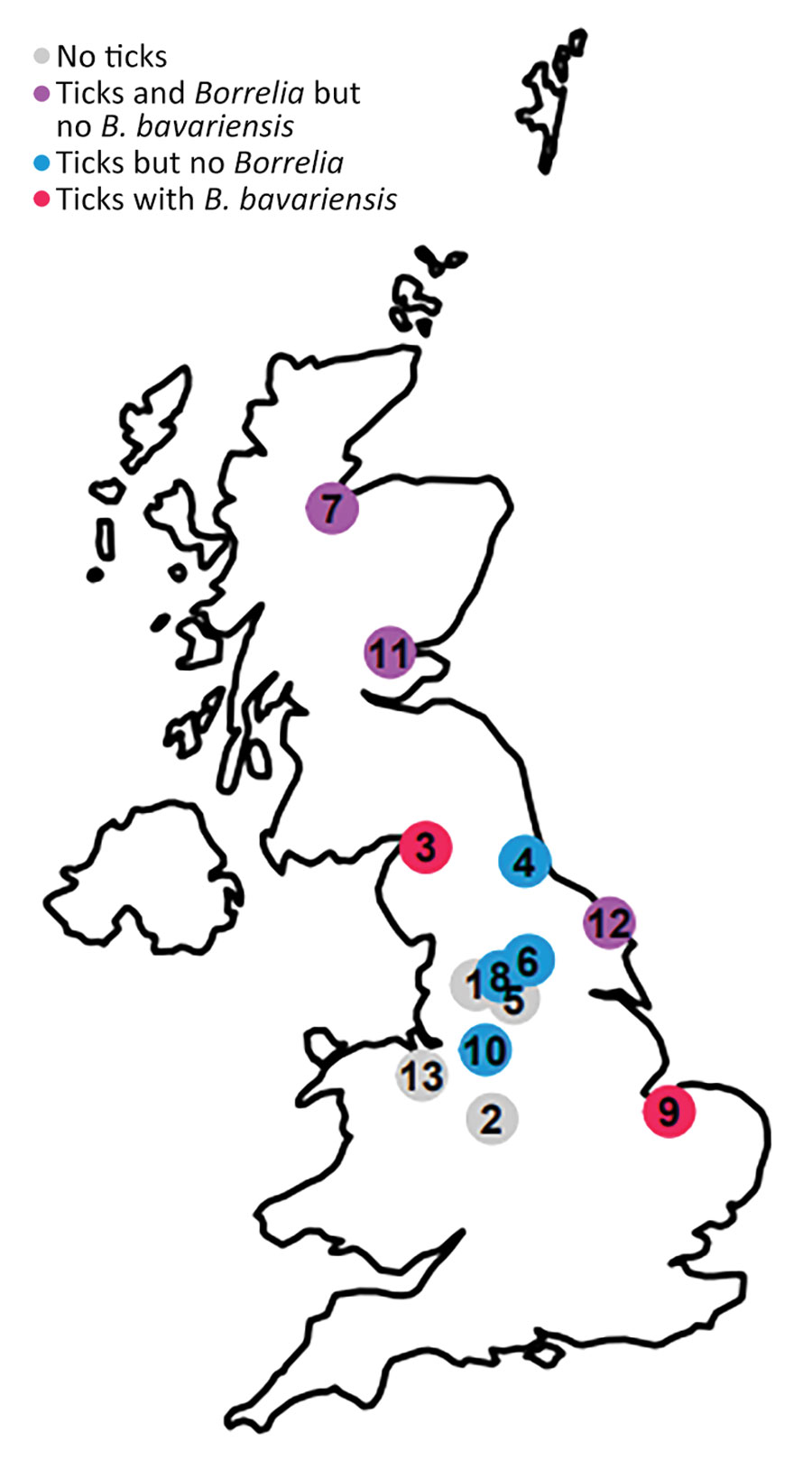Volume 29, Number 10—October 2023
Research Letter
Borrelia bavariensis in Questing Ixodes ricinus Ticks, United Kingdom
Figure

Figure. Relative locations of 13 towns where questing tick surveys were conducted in the United Kingdom to test for Borrelia burgdorferi sensu lato. The colors represent presence and absence of Ixodes ricinus ticks and their Borrelia infection status. The numbers correspond to the locations listed in the Table.
Page created: August 31, 2023
Page updated: September 20, 2023
Page reviewed: September 20, 2023
The conclusions, findings, and opinions expressed by authors contributing to this journal do not necessarily reflect the official position of the U.S. Department of Health and Human Services, the Public Health Service, the Centers for Disease Control and Prevention, or the authors' affiliated institutions. Use of trade names is for identification only and does not imply endorsement by any of the groups named above.